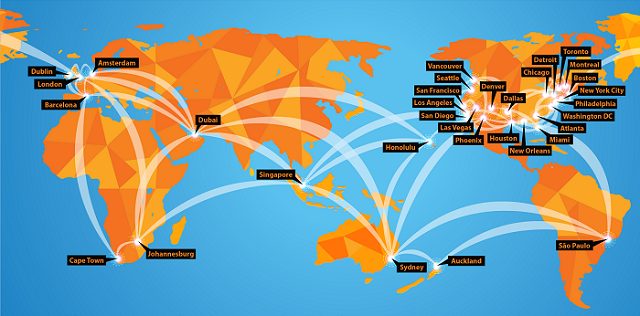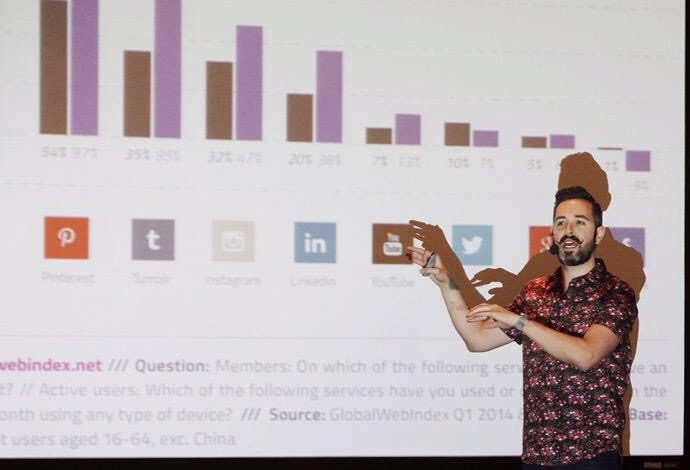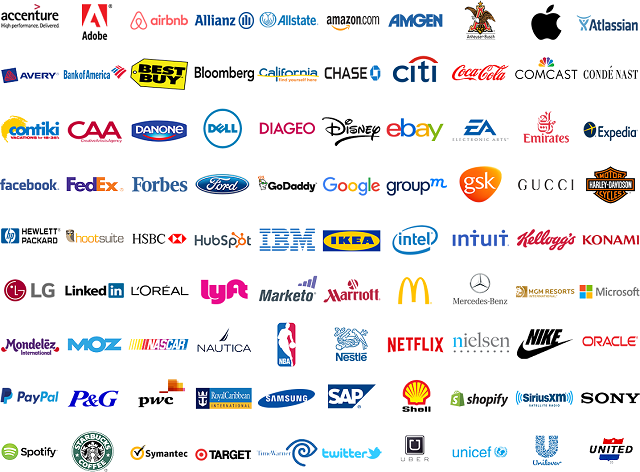Posts Tagged "Customer Relationship Management"
Articles
- Best Marketing Conference Sponsorship
- What Does it Mean to Be an Exhibitor at a Conference?
- What Is the Biggest Social Media Conference?
- What Is an Innovation Conference?
- What Is a Typical B2B Event?
- What Are the Cloud Technology Events in 2025?
- Marketing Event Volunteer Opportunities: A Comprehensive Guide
- Digital Marketing Event Volunteer Opportunities Near Me
- What Does a Volunteer Do at a Conference?
- Is DigiMarCon Worth It?
- Is DigiMarCon Good?
- What is the Biggest Marketing Forum?
- What are Digital Marketing Conferences?
- Marketing Conference Exhibiting: Your Guide to Success
- Digital Summit Comparison: A Closer Look at DigiMarCon
- Digital Marketing Conference
- Digital Marketing Events: Your Guide to Success in 2025
- Marketing Conferences: Unlocking Your Business Potential in 2025
- What Is The Future of Digital Marketing in 2030?
- B2B Event Marketing Strategy: Unlocking Success For Your Business
- Why B2B Event Marketing?
- What Should a B2B Marketing Strategy Include?
- Top Marketing Conferences for 2025
- What Is the Future of Marketing in 2025?
Digital Marketing Conferences
- NORTH AMERICA
- DigiMarCon Cruise
(New Orleans, LA, USA) - DigiMarCon West
(Los Angeles, CA, USA) - DigiMarCon Northwest
(Seattle, WA, USA) - DigiMarCon Canada West
(Vancouver, BC, USA) - DigiMarCon Canada
(Toronto, ON, Canada) - DigiMarCon Canada East
(Montreal, QC, Canada) - DigiMarCon Florida
(Orlando, FL, USA) - DigiMarCon Gulf Coast
(Houston, TX, USA) - DigiMarCon Southern California
(San Diego, CA, USA) - DigiMarCon Midwest
(Chicago, IL, USA) - DigiMarCon Mid-South
(Nashville, TN, USA) - DigiMarCon Great Lakes
(Detroit, MI, USA) - DigiMarCon North
(Minneapolis, MN, USA) - DigiMarCon Central
(Kansas City, MO, USA) - DigiMarCon Texas
(Dallas, TX, USA) - DigiMarCon New England
(Boston, MA, USA) - DigiMarCon Mid-Atlantic
(Philadelphia, PA, USA) - DigiMarCon South Florida
(Miami, FL, USA) - DigiMarCon Southeast
(Atlanta, GA, USA) - DigiMarCon Central Florida
(Tampa, FL, USA) - DigiMarCon East
(New York, NY, USA) - DigiMarCon South Atlantic
(Charlotte, NC, USA) - DigiMarCon America
(Washington, D.C. USA) - DigiMarCon Northern California
(San Francisco, CA, USA) - DigiMarCon Rocky Mountains
(Denver, CO, USA) - DigiMarCon South
(San Antonio, TX, USA) - DigiMarCon Silicon Valley
(San Jose, CA, USA) - DigiMarCon Orange County
(Anaheim, CA, USA) - DigiMarCon Southwest
(Phoenix, AZ, USA) - DigiMarCon World
(Las Vegas, NV, USA)
- DigiMarCon Cruise
- LATIN AMERICA
- EUROPE
- MIDDLE EAST
- AFRICA
- ASIA PACIFIC
- DigiMarCon Hawaii & Pacific
(Honolulu, HI, USA) - DigiMarCon Asia & Japan
(Tokyo, Japan) - DigiMarCon New Zealand
(Auckland, New Zealand) - DigiMarCon Australia
(Sydney, Australia) - DigiMarCon Oceania
(Melbourne, Australia) - DigiMarCon Southeast Asia
(Singapore) - DigiMarCon India
(New Delhi, India) - DigiMarCon North Asia & China
(Shanghai, China)
- DigiMarCon Hawaii & Pacific
- VIRTUAL
Digital Marketing Blog
- What Makes DigiMarCon Stand Out (And Is It Worth It?) October 30, 2025
- Is DigiMarCon Worth Attending? A Complete Breakdown October 29, 2025
- DigiMarCon for Startups: Why Founders Shouldn’t Miss It October 29, 2025
- DigiMarCon Recap: What Went Down and What’s Next October 29, 2025

































Navigating Cookieless Marketing: Strategies for Success
The digital marketing world is changing fast with the drop in third-party cookies. Businesses need to find new ways to market that respect privacy and work well. They must use innovative cookieless marketing approaches.
People’s views on privacy and rules are changing. Marketers must now build direct relationships with their audience. They also need to use other data sources to guide their plans.
By accepting these changes and trying out new cookieless marketing strategies, companies can still reach and connect with their audience. This article will explore what cookie deprecation means and how marketers can succeed without cookies.
The End of Third-Party Cookies: Understanding the Shift
The move away from third-party cookies is a big change in digital marketing. It’s because of privacy worries and new rules. This change is making marketers rethink how they connect with people. Knowing about this shift is key for marketers to change their plans.
Google Chrome’s Cookie Deprecation Plan
Google Chrome, the top web browser, plans to stop third-party cookies. This change will happen slowly, giving marketers time to adjust. Chrome will gradually remove third-party cookies, helping marketers find new ways to track and target.
This move by Google aims to protect user privacy. It also gives the marketing world time to learn how to market without cookies.
Safari and Firefox Privacy Measures
Safari and Firefox have strong privacy features to stop cross-site tracking. Safari’s Intelligent Tracking Prevention (ITP) and Firefox’s Enhanced Tracking Protection block third-party cookies. These steps help make browsing more private.
These changes mean marketers must find new ways to reach their goals. They need to use new tech and methods. The goal is to build direct connections with customers and use first-party data for better marketing.
The Privacy-First Web: New Consumer Expectations
More people want to know how their personal data is used. This change is making marketers rethink how they talk to their audience. Now, people don’t give up their data for free without knowing how it’s used.
Transparency has become a competitive advantage. People like brands that care about their privacy. Marketers need to be open about their data use and offer something in return for data. This way, they can earn trust and build strong connections with their audience.
Transparency as a Competitive Advantage
To succeed, marketers must focus on privacy-friendly marketing. They need to be clear about how they collect data. They should also give people control over their data and use it in a way that respects privacy.
With third-party cookies fading away, new ways to target ads are needed. Marketers should use contextual ads and first-party data to reach their audience.
By adopting these strategies, brands can meet privacy rules and stand out. They show they truly care about keeping consumer data safe.
Challenges of Cookieless Marketing
Cookieless marketing boosts user privacy but makes tracking harder for digital marketers. Without third-party cookies, it’s tough to follow user actions and see who converted.
The big issue is the multi-touch attribution problem. Without cookies, it’s hard to say which actions led to a sale. Marketers need new ways to see how well their ads work.
The Multi-Touch Attribution Problem
It’s hard to follow a customer’s path without cookies. Marketers use many ways to reach out, like social media and email. But without a single way to track, it’s hard to know what worked best.
As Forrester says, “Marketers worry about not knowing what works.” Everyone wants a good way to solve this problem.
To tackle these issues, marketers are exploring cookieless analytics. They’re using their own data, smart ads, and new ways to know who’s interested. This way, they can learn about customers without breaking privacy rules.
By using these methods, marketers can deal with cookieless marketing’s hurdles. They can succeed even when privacy is the top priority.
Effective Cookieless Marketing Strategies
The move to a cookieless future means we need new marketing ways that respect user privacy. With more people worried about their online data, marketers must find ways to still target ads effectively. This is all while keeping user privacy in mind.
Using new tech is key to this balance. Federated Learning of Cohorts (FLoC) and Topics API are two big names in this field. They help make marketing personal without using third-party cookies.
Federated Learning of Cohorts (FLoC) and Topics API
FLoC groups users by what they browse, letting ads target these groups without knowing who they are. This keeps user data safe while still making ads work.
Topics API, on the other hand, helps with ads based on what users like. It does this by sorting users into broad topics. This way, ads can be targeted without knowing too much about the user.
By using these tools, marketers can create effective cookieless marketing strategies. These strategies meet new privacy rules and what consumers want. As digital marketing keeps changing, using these new tools will help businesses succeed in a world without cookies.
Building a First-Party Data Strategy
As the digital world changes, having a strong first-party data strategy is key for cookieless marketing. First-party data comes from customers directly. It gives insights for personalized marketing.
Loyalty Programs and Incentives
Loyalty programs and incentives are great for getting first-party data. Brands can offer rewards or special content to get customers to share their info. For example, a loyalty program that gives points for every buy can get customers to share their contact info.
Content Gating Strategies
Content gating is another good strategy. It involves offering premium content for customer info. This could be eBooks, webinars, or exclusive videos. By doing this, brands can gather a list of engaged customers who want to hear more.
By using these strategies, marketers can create a detailed first-party data set. This supports digital marketing without cookies and makes customer experiences more personal.
Contextual Advertising in the Cookieless World
The digital world is changing fast, and contextual advertising is becoming key in this new era. Marketers are now focusing on where ads are shown, not just on user data from cookies. This change is because they need effective marketing strategies without cookies.
Contextual ads are shown based on what’s on the webpage or platform. This way, marketers can reach their audience better without invading privacy. By using what’s around the ad, brands can show their ads to the right people at the right time.
Contextual Relevance Metrics
To see how well ads work, marketers use contextual relevance metrics. These metrics show how well an ad fits with the content around it. Important ones are:
By looking at these metrics, marketers can make their ads better. This helps brands get more out of their marketing in a world without cookies.
Contextual advertising has many good points in a world without cookies. It’s a privacy-friendly choice and a more effective way to find target audiences. As digital marketing keeps changing, contextual ads will be very important in cookieless marketing plans.
Identity Solutions and Alternatives to Cookies
The end of third-party cookies has led to new ideas in identity solutions and targeting. Marketers are exploring new ways to target people without cookies. They want to keep their marketing effective while also protecting user privacy.
Finding and targeting users on various devices is a big challenge. Identity solutions aim to solve this by offering a way to identify users that’s both secure and private. These solutions give users more control over their data.
Unified ID2.0 and Other Industry Initiatives
Many groups are working on new identity solutions to replace cookies. Unified ID2.0 is one effort to create a common identifier for users across different platforms. It’s designed to be more private and secure, helping marketers target users without invading their privacy.
Other efforts focus on contextual advertising and first-party data strategies. These methods put user privacy first but still help marketers reach their audience. By using these alternatives, marketers can create privacy-friendly marketing that users will appreciate.
The digital marketing world is changing fast. Identity solutions and cookie alternatives are key to the future of cookieless targeting. By embracing these new methods, marketers can keep their targeting effective while protecting user privacy.
Real-World Success Stories: Cookieless Marketing in Action
Cookieless marketing is now the standard, with brands finding new ways to succeed. They’re using strategies that don’t need third-party cookies. And the outcomes are looking good.
One area where cookieless marketing shines is in conversion optimization without tracking. Brands are finding creative ways to boost their conversion rates. They’re doing this without using old tracking methods.
Conversion Optimization Without Tracking
Getting people to take action is key in marketing. In a world without cookies, this means using new data and creative analytics. For example, brands are using first-party data to make customer experiences more personal. This helps increase conversions.
Some examples of success include:
These methods are not just working; they also meet consumer privacy needs. By going cookieless, brands can earn trust and achieve their goals.
The stories of success in cookieless marketing show the industry’s ability to change and improve. As marketers keep exploring this new space, they’ll focus on giving value to customers. They’ll do this while respecting their privacy.
Conclusion: Thriving in the Cookieless Future
The digital world is always changing, and using cookieless marketing is key to success. Marketers need to understand the impact of third-party cookie deprecation. They must also find new ways to reach their audience while keeping privacy and transparency in mind.
Switching to first-party data, contextual ads, and identity solutions is essential. These methods help marketers stay connected with their audience online. They also keep engagement high.
To succeed in a world without cookies, marketers must be flexible and open to new ideas. Keeping up with digital changes is crucial. This way, they can meet their goals and thrive in the fast-paced digital marketing scene.
FAQ
What is cookieless marketing, and why is it necessary?
Cookieless marketing is about reaching people without using third-party cookies. It’s needed because of privacy worries and new rules, like Google Chrome’s plan to stop using cookies.
How does the deprecation of third-party cookies affect digital marketing?
Losing third-party cookies makes it hard to track users and send targeted ads. It also makes it tough to see how well campaigns work.
What are some effective cookieless marketing strategies?
Good cookieless marketing includes using FLoC and Topics API. It also means building your own data through loyalty programs and content. Plus, using ads based on what’s on the page.
How can marketers measure the success of their cookieless marketing campaigns?
Marketers can track their campaigns by using new ways to measure success. They can look at how well ads match the content and focus on getting people to take action.
What is the role of identity solutions in cookieless marketing?
Identity solutions, like Unified ID2.0, help by giving new ways to target and measure ads. They let marketers reach people without using third-party cookies.
How can brands build trust with their audiences in a cookieless world?
Brands can gain trust by being open about how they use data. They should offer something valuable in return for data and focus on privacy-friendly ways to market.
What are the benefits of contextual advertising in a cookieless world?
Contextual ads are good because they can be targeted without hurting privacy. They make ads more relevant and interesting to users.
How can marketers prepare for the cookieless future?
Marketers should get ready by learning about the cookie changes. They should start using new methods and look into ways to target and analyze without cookies.